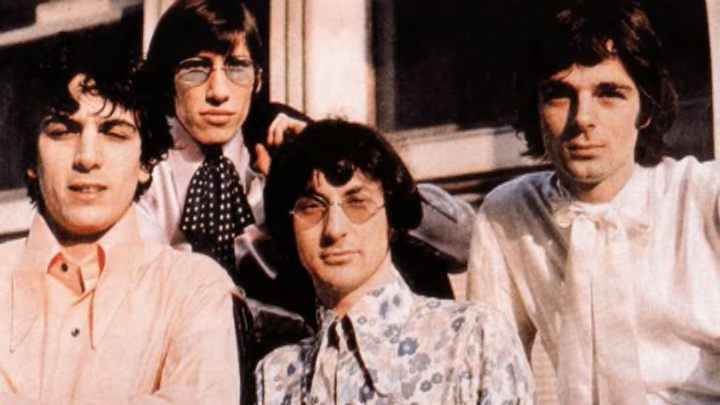The Time Pink Floyd Posed for a Teenybop Magazine Spread
By Nick Keppler

Jackie magazine was the British equivalent of Tiger Beat. At its 1970s peak, 600,000 copies were sold each week. Its fashion tips, romance advice, and celebrity gossip were passed around sleepovers from London to Leeds. Each issue was lit up with pictorials of boyish heartthrobs. The Monkees, the Osmonds and David Cassidy were favorites.
The pin-up for the October 7, 1967 issue was an interesting choice. It was Pink Floyd, the same band whose dark, druggy, and musically and thematically complex albums have become classics.
The four young men are decked out in spotless mod attire, their hair slick and shiny as they grant the camera half-smiles. Lead singer Syd Barrett, always off cue, is closing his eyes.
The band wound up in the magazine despite—or, perhaps, because of—the fact they were far from stars then. The editors of Jackie had never heard a Pink Floyd record because there wasn’t one when the pictures were snapped.
According to Echoes: The Complete History of Pink Floyd by Glenn Povey, the photoshoot happened on Feb. 6, 1967, five days after the band signed to EMI and five weeks before they released their transgressive first single, “Arnold Layne,” about a transvestite. EMI had recruited the band from the London club scene and quickly scheduled two photo shoots, one for Jackie and another for a magazine called Fashion 208, presumably anticipating they’d be published when Pink Floyd had material out. Their psychedelically flavored first record, The Piper at the Gates of Dawn, came out two months before their Jackie pin-up did.
Launched in 1964, Jackie was all about the latest pop stars. Engelbert Humperdinck, the Dave Clark Five, the Rolling Stones and, of course, the Beatles appeared on covers. So it was up for featuring the latest EMI signee without having actually heard them. (The magazine shuttered in 1993, its circulation dwindling as it resisted the trend of juicier, more sexually explicit magazines.)
The line between teen pop and substantive music was blurred to magazines back then. In the U.S., a writer for 16 Magazine experienced a “dream day” with Jim Morrison of the Doors and a kiddie publication called Teen Scoop offered a vinyl record interview with Simon and Garfunkel as a bonus.